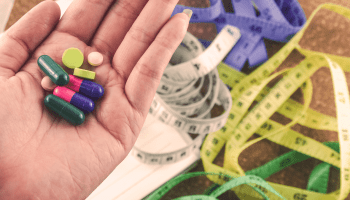The term dysphagia describes swallowing difficulty. It’s often associated with health conditions that affect the nervous system, such as multiple sclerosis or a stroke, as well as mouth cancer or gastro-oesophageal reflux disease. Temporary dysphagia can occur during anxiety attacks, too.
Other symptoms of dysphagia include difficulty eating and drinking and bringing food back up, occasionally through the nostrils.
Here are some tips to help when living with dysphagia:
Get an expert opinion and a diagnosis

Asking a physician to review your symptoms and their underlying cause will help you understand the condition and how best to manage your personal experience with it.
Ask questions, raise your concerns, and walk out armed with knowledge.
Don’t talk while eating

Chatting around the dining table has long been a loved part of the day. However, keeping your focus on chewing and swallowing safely will create good habits of mindful eating. If you need to talk, simply take a break, and ensure there’s no food in your mouth.
Always have water to hand
Although it can occasionally make coughing worse, drinking water regularly, especially with meals, will ensure that you can swallow small particles of food.
Use an instant thickener
Thickeners can be added to food and fluids to slow the transport of food from the mouth to the stomach. This allows more time to safely coordinate the swallowing process and prevents food and drink from being inhaled into the lungs, which can cause choking, pneumonia, and chest infections.
Purchase some gel thickener from SimplyThick. Gel sachets have a smoother texture than powder thickeners and are ready in seconds. They are mixable with any utensil, including coffee stirrers, and can be used in any beverage – hot or cold!
Eat soft foods

This may sound obvious, but you might not know that you can turn your favorite hard foods into soft foods. If you think apples and pears might be a little too hard, try heating them on the stove for a softer consistency. Trial and error are the key principles when finding what works for you, but you can make any food easier to swallow. Scrambled eggs, oatmeal, and mashed potatoes will all make swallowing easier and more comfortable.
Take your own foods out
If eating outside your home or in public makes you anxious because of your dysphagia, prepare foods that are easy to chew and swallow to take with you to functions and events that include a meal. Making sure that you have the nutrients needed to thrive at public functions shouldn’t depend on whether the food they serve is suitable, but to make sure that your needs are catered to, simply pack a small, high energy lunch of chewable and swallowable foods and take it with you!
In summary
To deal with dysphagia most effectively, lots of trial and error is required. Try new foods with new methods of cooking that make them softer and more manageable, drink more water, and include a thickener to slow the swallowing process to make it safer.
Read Also:




























